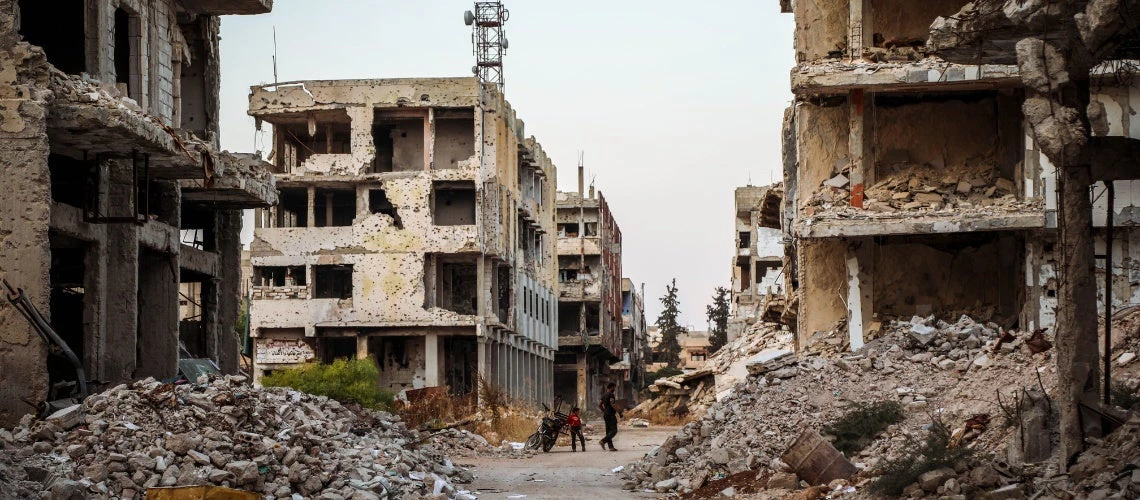 A man walking down a dirt road between two buildings
A man walking down a dirt road between two buildings
The halfway mark of the Sendai Framework for Disaster Risk Reduction 2015-2030 was reached with a resounding message from the midterm review at the UN General Assembly in New York on May 18, 2023: collectively, we are not on track to meet the targets set to be achieved by 2030. We weren’t on track prior to COVID-19, and the pandemic has further stalled progress on disaster risk management (DRM). The pandemic required an urgent fiscal response which saw numerous budget reallocations to address its direct and indirect impacts.
A common theme in the discussions in New York was that of multidimensional crisis. For countries such as Mozambique, South Sudan, and Yemen, the pandemic overlaid the continuance of natural hazard-related disasters, and for some, this amplified pre-existing protracted humanitarian crisis, conflict, and food insecurity, a situation further exacerbated by the direct and indirect impacts of Russia's invasion of Ukraine. While in theory, the complexity of risks is nothing new, there remains a lack of investment, analytics, and collaborative tools to adapt DRM to fragility, conflict, and violent (FCV) settings, and to account for the complex causal mechanisms between hazard exposure, vulnerabilities, and risks. While preventive action ideally occurs beforehand, in practice, post-disaster settings often present opportunities for improvement, offering an entry point for DRM engagement, and mobilization of development finance to achieve disaster resilience.
The Global Facility for Disaster Reduction and Recovery (GFDRR) and World Bank engagement in the aftermath of the earthquakes in Türkiye and Syria presents a novel approach, one which is more cognizant of multidimensional crisis. As an input to the Global Rapid Post-Disaster Damage Estimation (GRADE) process for Türkiye and Syria, specific consideration was given to how disaster response, recovery and reconstruction efforts could interplay with pre-existing and new conditions of FCV. This complementary analysis, soon to be published, seeks to raise awareness of the risks such as the impact of the conflict in Syria on the exposure of assets; possible unequal distribution of resources in the recovery and reconstruction phases as a potential source of societal tension; and new challenges related to disaster and conflict-displacement populations as a source of strain on welfare systems.
A pure disaster lens often fails to consider these complex dynamics which will ultimately affect the conditions in which recovery and reconstruction take place, thus undermining goals for disaster risk reduction and systems’ resilience building. We need to encourage national and subnational governments to include approaches that consider multidimensional crises, while continuing with further research and implementing lessons learned from previous experiences such as our Integrated Urban Services Emergency Project (YIUSEP) in Yemen. In addition to a hazard assessment, the World Bank team conducted a conflict analysis to better understand the multiple risks the Yemeni people face and to identify potential conflict triggers related to the project. As a result, response to and preparedness for floods took not only disaster risk into account but adopted processes of engagement with communities to inform the decision-making of where best to direct and prioritize investments and to avoid inter-community conflicts.
Governments often face compounding crises across different timeframes, with attention typically shifting to the most pressing issues, sometimes neglecting long-term resilience-building efforts. However, these crises also present opportunities. When disaster strikes, it captures the attention of governments and creates an opportunity to introduce measures that contribute to long-term resilience. These actions not only strengthen communities' capacity to withstand the effects of disasters, including those linked to climate change but also ensure socio-economic stability.
Disasters can allow for a reset in societies, allowing us to rebuild in ways that are more resilient and simultaneously address the underlying causes of conflicts and fragility. Disaster response efforts can be a useful entry point, bringing people together to foster a sense of solidarity, which can help to bridge divides and reduce tensions in FCV settings. We must actively seek and capitalize on these opportunities to create a more resilient future.



Join the Conversation